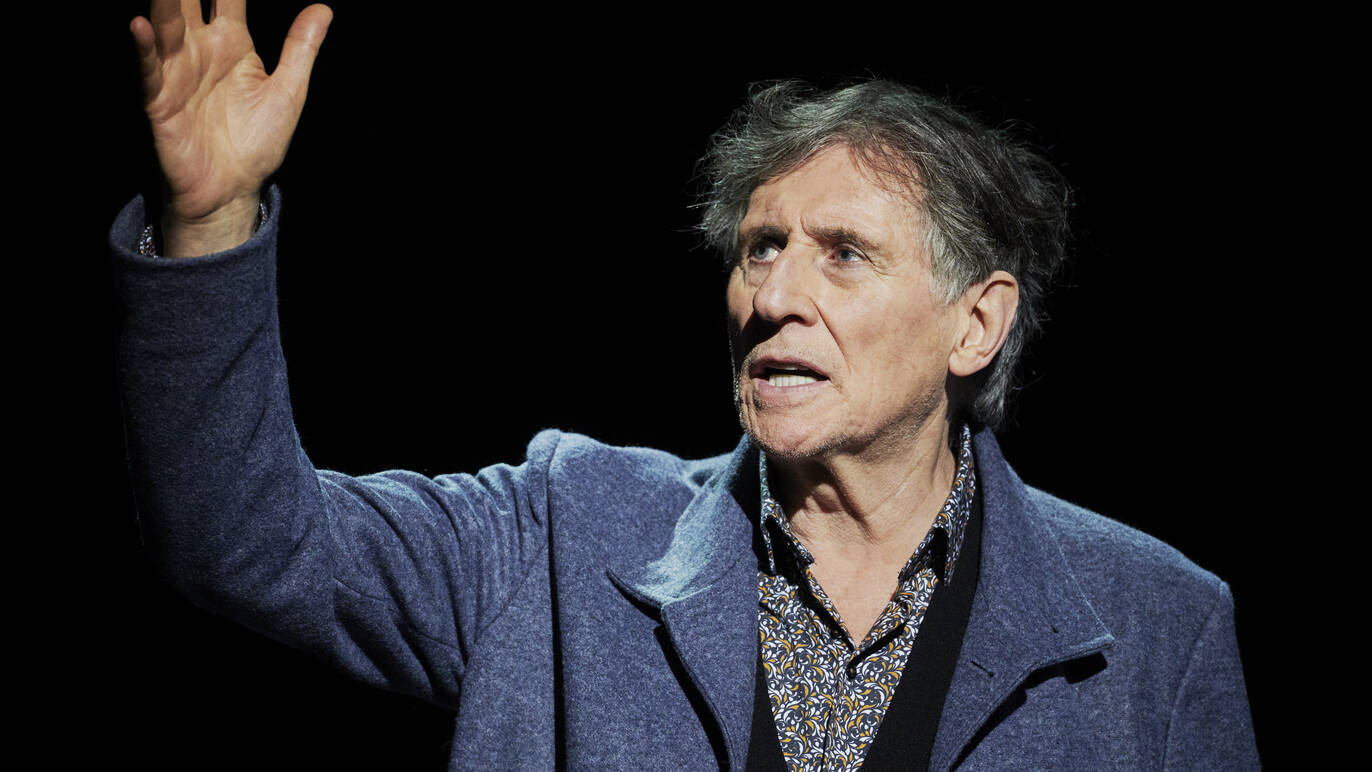
06 Nov TIO NYC: More on the Art Part (Performing & Fine) Uptown & Down!
The art part of New York City continues to engage and enchant, including a bravura performance by iconic actor Gabriel Byrne in the autobiographical “Walking with Ghosts.” Likewise for another solo blockbuster, this one featuring artist Alex Katz at the Guggenheim. Other noteworthy artists are showcased at Chelsea galleries as well.
Go here for more about TIO NYC.
Gabriel Byrne, “Walking With Ghosts” The Music Box Theatre (through December 30):
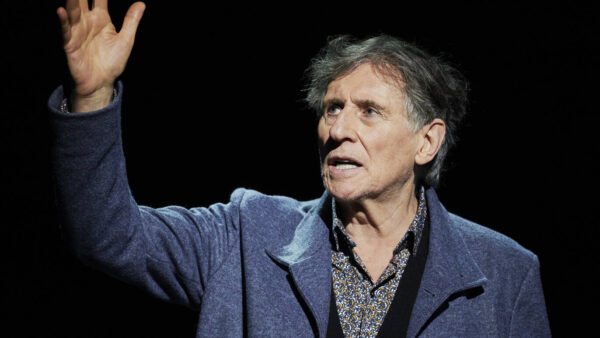
Image, Ross Kavanaugh for Time Out.
“By turns hilarious and heartbreaking, Walking with Ghosts is a delightful portrait of the people and landscapes that ultimately shape our destinies. A Landmark production, it comes to Broadway direct from highly acclaimed runs in London’s West End; Edinburgh, Scotland; and Dublin, Ireland.
“As a young boy growing up on the outskirts of Dublin, the stage and screen legend sought refuge in a world of imagination among the fields and hills near his home, at the edge of a rapidly encroaching city. Moving between sensual recollection of childhood in a now almost vanished Ireland and commentary on stardom, the actor-writer returns to Broadway to reflect on a life’s journey.
“Adapted from his best-selling memoir of the same name and directed by Emmy Award® winner Lonny Price (Sunset Boulevard, Lady Day at Emerson’s Bar & Grill), Walking with Ghosts is written and performed by the “SPELLBINDING” (The Times) Gabriel Byrne (Hereditary, HBO’s In Treatment),” explains the Music Box.
Gabriel Byrne is a stage and screen legend who has appeared in about 80 films and won a Golden Globe for his role in HBO’s “In Treatment’ for one example of his many honors. Yet Byrnes is not a household name. So the question that pops into mind is does the actor have enough material from his memoir to fill 2 hours and 20 minutes on the boards?
Answer: Yes, absolutely.
The “ghosts” Byrne is referring to are not actual spooks. They are haunting memories of figures and events in Byrne’s life, including family members such as a beloved grandmother who turned the boy onto cinema:
“Every time I stayed with Granny, we went to the pictures and for dinner we had a big bowl of cornflakes. Soon the characters on the screen were as familiar as real people, and Granny would talk back to them.”
Byrne fully inhabits many others onstage too: Catholic school peers; frustrated fellow plumbers during his failed stint working in the trade; fellow restaurant workers in yet another abortive attempt at conventional employment, (including toilet attendant); an abusive priest; angsty film-and television-studio executives; also a perpetually inebriated Richard Burton.
Throughout this elegantly minimal production (just tables and chairs on an otherwise bare stage), Byrne never goes over the top. Never attempts to razzle-dazzle. In fact, in tribute to his prodigious technical skills, the charismatic actor remains humble and believable throughout, while delivering a message about the universal need to deal with the ghosts of our pasts.
The night we attended this evening of seductive storytelling the audience, including our little crowd, was totally rapt.
The following is a review from Time Out:
This one-man autobiographical show, written and performed by the wonderfully craggy Irish star Gabriel Byrne, is a lilting, lyrical trip down memory lane.
Byrne – a quiet man by Hollywood standards, in that he isn’t a notable limelight-seeker – has nevertheless had quite the career, directed by the Coens, Wim Wenders, Jim Jarmusch and every other quirky arthouse A-lister you can think of, in over 80 movies. But his showbiz years don’t get a look in here. This soulful patchwork of fond memories, funny stories and cautionary tales is happiest when hanging out in the Dublin of his boyhood with the ghosts of the folks who formed him…
Alex Katz “Gathering” at the Guggenheim (through February 20):
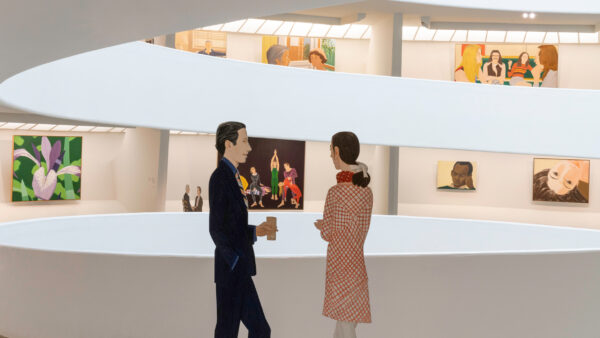
The Guggenheim Museum is now holding a retrospective of the working of artist Alex Katz who, in his 90s, is producing some of his best work ever as “Gathering” proves. The show is a knock-out.
Katz came to his signature style in New York in the late 1950s, a time when Abstract Expressionism dominated, with Color Field painting and Pop waiting in the wings. However, the artist thumbed his nose at the isms du jour, resolutely avoiding affiliation with any movement. Instead his boldly simplified portraits and landscapes represent an ongoing dialogue between realism and some of the more abstract tendencies in modernism.
Much in the way Warhol turned Campbell’s soup cans into an instantly recognizable symbols, Katz transformed his circle of family and friends into arresting icons. In that way the artist flirted with Pop art, which notably celebrated the quotidian and middle-class life in general.
By the mid-1960s, Katz’s style was all about slick surfaces. From there, his canvases grow dramatically in size, including his recent abstract landscape, which focus on light, snow, and reflections on water, the latter an obsession.
At the center of the show – and of the artist’s heart – is his wife of 65 years, Ada del Moro, a former biologist, whom he met in 1957. Katz depicted her nearly 1,000 times in various mediums.
That said, in the end Katz is a painter of light which “gathers” at dawn and dusk, and a painter of moments that enthralled him. In his efforts to capture those impressions, Katz enthralls us too.
The images in the final room of the show, the rotunda, the artist’s latest work proves that age is just a number. Talent endures. Even as it continues to surprise.
“The art world of the 1990’s and beyond was no longer committed to the rules and expectations of modernist legacy, and this allowed for more interest in his art. Katz’s emphasis on the iconic – or even deadpan – over the expressive, and his foregrounding the “surface of things” has been a draw for younger artists. Elizabeth Peyton, who makes painterly portraits of celebrity icons in an up-close and cropped manner, has taken a cue from Katz. And ‘pictures generation’ artist, Richard Prince has taken interest in the commercial style and meaningfully ambiguous quality of Katz’s figural art. Once derided by modernist critic Clement Greenberg, today several high-profile writers and collectors (e.g.: Carter Ratcliffe, Robert Storr and Charles Saatchi) actively promote Katz’s art, and with this push his influence grows. Katz is admired today for sustaining a distinctively ‘cool’ aura, which is apparent in the uncomplicated well-being manifested by his figures, as well as by the artist in his stalwart individuality and distinction from the movements that dominated later 20th-century art,” wrote The Art Story.
Read Roberta Smith’s spot on review for The New York Times:
Go here to watch a video titled “The Immediate Present with Alex Katz.”
In Chelsea:
Well worth checking out is Eric Aho at D.C. Moore, 535 West 22nd Street (through November 12).
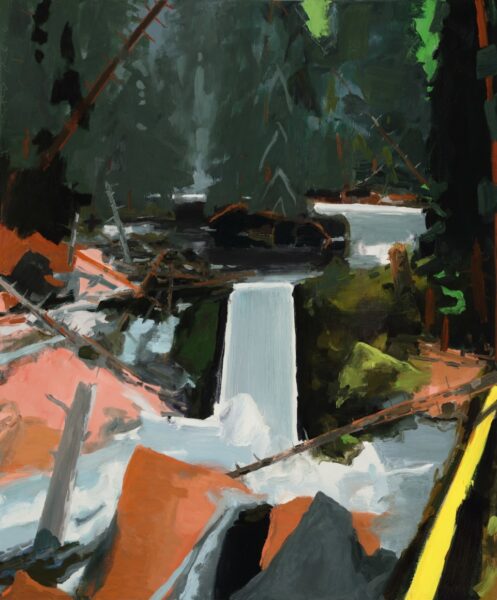
Interior, 2020
“Eric Aho is an American painter known for his immersive paintings of the natural world. With color and form that bridges the way we experience nature in totality, Aho’s canvases at every scale, occupy a zone of perception between sober realism and ecstatic abstraction. While Aho works from his own impressions and memories of the landscape, the artist also draws upon major pillars of art history—including De Kooning, Goya, Homer, and Constable—to define his compositions. He’s been called “One of the leading painters of landscape and the environment of his generation…,” writes the gallery.
The muscular, monumental work of renowned sculptor Ursula Von Rydingsvard is now on display at Galerie LeLong, 528 West 26th Street (though December 17):
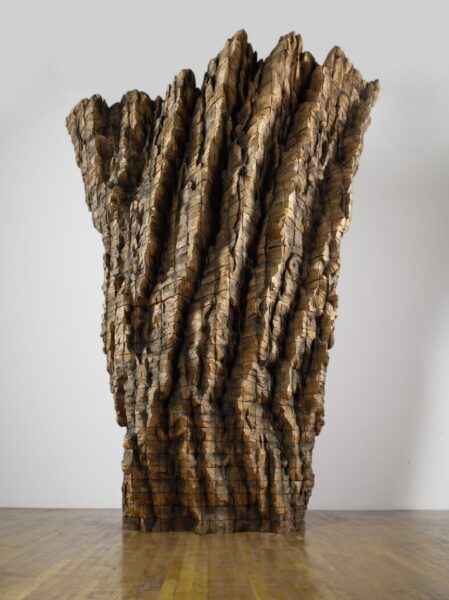
“Over a remarkable five-decade-long career, Ursula von Rydingsvard has become one of the most influential sculptors working today. She is best known for creating large-scale, often monumental sculpture from cedar beams, which she painstakingly cuts and assembles before finally rubbing a graphite patina into the work’s textured, faceted surfaces. Her signature abstract shapes refer to things in the real world—vessels, bowls, tools, and other objects—each revealing the mark of the human hand while also summoning natural forms and forces…, ” explains the gallery.
The all-over paintings of James Siena are featured at Miles McEnery, 525 West 22nd Street (through November 26.)
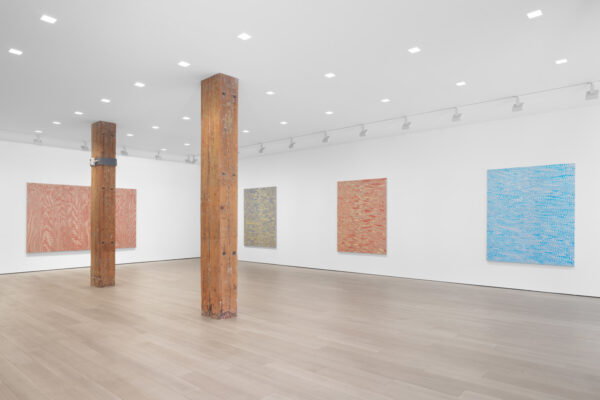
“…James Siena is celebrated for his inimitable process of creating intricate abstractions that have situated him firmly within the trajectory of contemporary American art. His practice is driven by self-imposed, often cryptic sets of rules that he — and various critics — have termed visual algorithms. Siena preemptively determines his marks and actions and repeats them procedurally as his works result in intensely concentrated, vibrantly colored, freehand compositions.
“His oeuvre often references diagrams, complex puzzles, labyrinths, and mapping. Siena’s inward meditations actively engage traditions of pattern and mark-making in an ongoing exploration of scale, materiality, and interaction of color. Maneuvering across a diverse range of mediums, including painting, sculpture, drawing, lithography, etching and woodcuts, his work has placed him firmly within the canon of contemporary American art…, “ explains the gallery.


Sorry, the comment form is closed at this time.